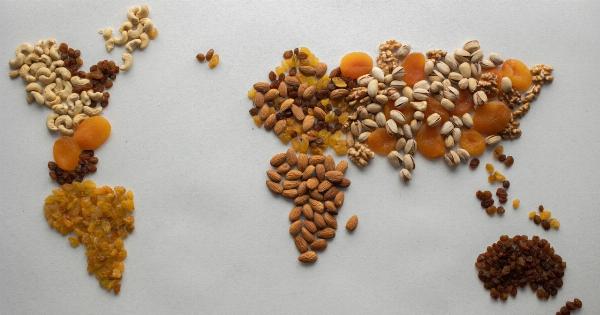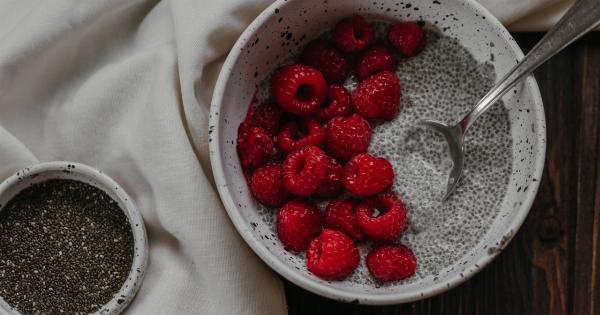When it comes to healthy eating, there is no one-size-fits-all approach. Different cultures around the world have their own unique dietary patterns and food preferences that contribute to overall well-being.
In this visual guide, we will explore some of the healthiest eating traditions and practices from various countries, offering a glimpse into the diverse ways people prioritize nutrition and nourishment.
1. The Mediterranean Diet: Greece and Italy
The Mediterranean diet is renowned for its numerous health benefits. It emphasizes fresh fruits and vegetables, whole grains, legumes, lean proteins (such as fish and poultry), and healthy fats like olive oil.
The diet also includes moderate consumption of dairy products and red wine. This way of eating has been linked to reduced risk of heart disease, stroke, and certain types of cancer.
2. Traditional Japanese Cuisine
Japan is known for its emphasis on simplicity, balance, and freshness in their meals. Traditional Japanese cuisine includes nutrient-rich ingredients like fish, seaweed, tofu, and fermented foods like miso and natto.
The portion sizes are usually smaller compared to Western diets, and the practice of mindful eating is highly valued, allowing individuals to savor every bite.
3. Plant-Based Eating in India
In India, vegetarian and vegan diets have been followed for centuries due to cultural and religious beliefs. With an abundance of plant-based ingredients, Indian cuisine offers a wide variety of flavors, spices, and textures.
Staples include lentils, legumes, whole grains, vegetables, and an array of spices with powerful health benefits like turmeric, cumin, and ginger.
4. The French Paradox: France
The French Paradox refers to the observation that despite consuming foods rich in saturated fats, the French have relatively low rates of heart disease.
This phenomenon may be attributed to their eating habits, which involve portion control, slower eating pace, and appreciation for high-quality ingredients. The French also prioritize fresh, seasonal produce and enjoy a variety of cheeses in moderation.
5. South American Delights: Peru
Peruvian cuisine is a fusion of indigenous and European flavors, offering a range of nutrient-dense foods. Staples include quinoa, sweet potatoes, avocados, and diverse seafood.
Ceviche, a dish made of raw fish marinated in citrus juices, exemplifies the rich blend of flavors found in this vibrant cuisine. The incorporation of native ingredients contributes to the exceptional nutritional value.
6. The Okinawan Diet: Japan’s Longevity Secret
Okinawa, a Japanese island with one of the highest life expectancies in the world, follows a unique dietary pattern. The Okinawan diet consists of fresh fruits and vegetables, soy-based products, whole grains, and fish.
They also practice “Hara Hachi Bu,” which means eating until they are 80% full, allowing them to maintain a healthy body weight and reduce the risk of chronic diseases.
7. Nutrient-Rich Nordic Cuisine: Scandinavia
Scandinavian countries like Sweden, Norway, Denmark, and Finland have embraced a diet rich in nutrient-dense foods. Their cuisine includes fatty fish like salmon, herring, and mackerel, which are excellent sources of omega-3 fatty acids.
Berries, such as lingonberries and cloudberries, are also staples known for their high antioxidant content. Whole grains and root vegetables complete their nutritious meals.
8. Indigenous Wisdom: Aboriginal Australian Diet
The Aboriginal Australian diet is centered around local and wild-harvested foods. Traditional ingredients include kangaroo meat, fish, shellfish, native fruits like bush tomatoes and Kakadu plums, as well as a variety of seeds and nuts.
These nutrient-dense foods are adapted to the surrounding environment and provide a range of essential nutrients needed for optimal health.
9. Whole Food Plant-Based Diet: United States
In recent years, a growing number of individuals in the United States have embraced a whole food plant-based diet that focuses on minimally processed foods and eliminates or greatly reduces animal products.
This way of eating emphasizes whole grains, legumes, fruits, vegetables, nuts, and seeds. It has been shown to have numerous health benefits, including weight management and lower risk of chronic diseases.
10. Indigenous Māori Cuisine: New Zealand
Māori cuisine in New Zealand draws heavily on the country’s natural resources. Traditional foods include seafood, kūmara (sweet potato), wild game, fern shoots, and native herbs.
These ingredients are not only flavorful but also packed with essential nutrients. The Māori people have a deep connection with the land and emphasize sustainability, promoting a healthy and balanced approach to eating.
As we explore the diverse healthy eating practices across the world, it becomes evident that a variety of dietary patterns can support overall well-being.
Incorporating elements from different cultures can enrich our own diets and contribute to a healthier lifestyle. Whether it’s the Mediterranean emphasis on fresh produce or the Japanese focus on mindfulness, the key is to find a way of eating that suits your individual needs and preferences.





























